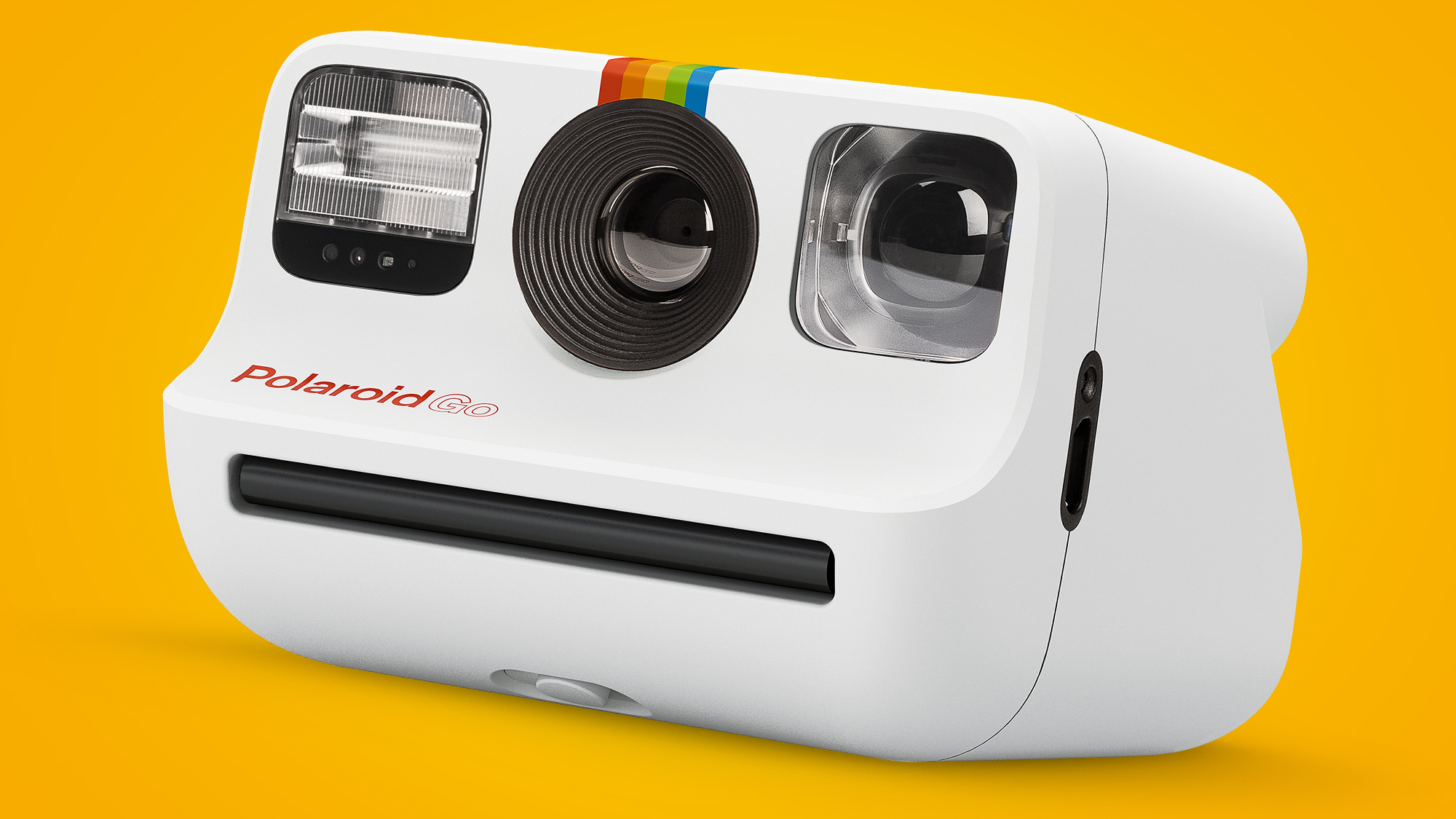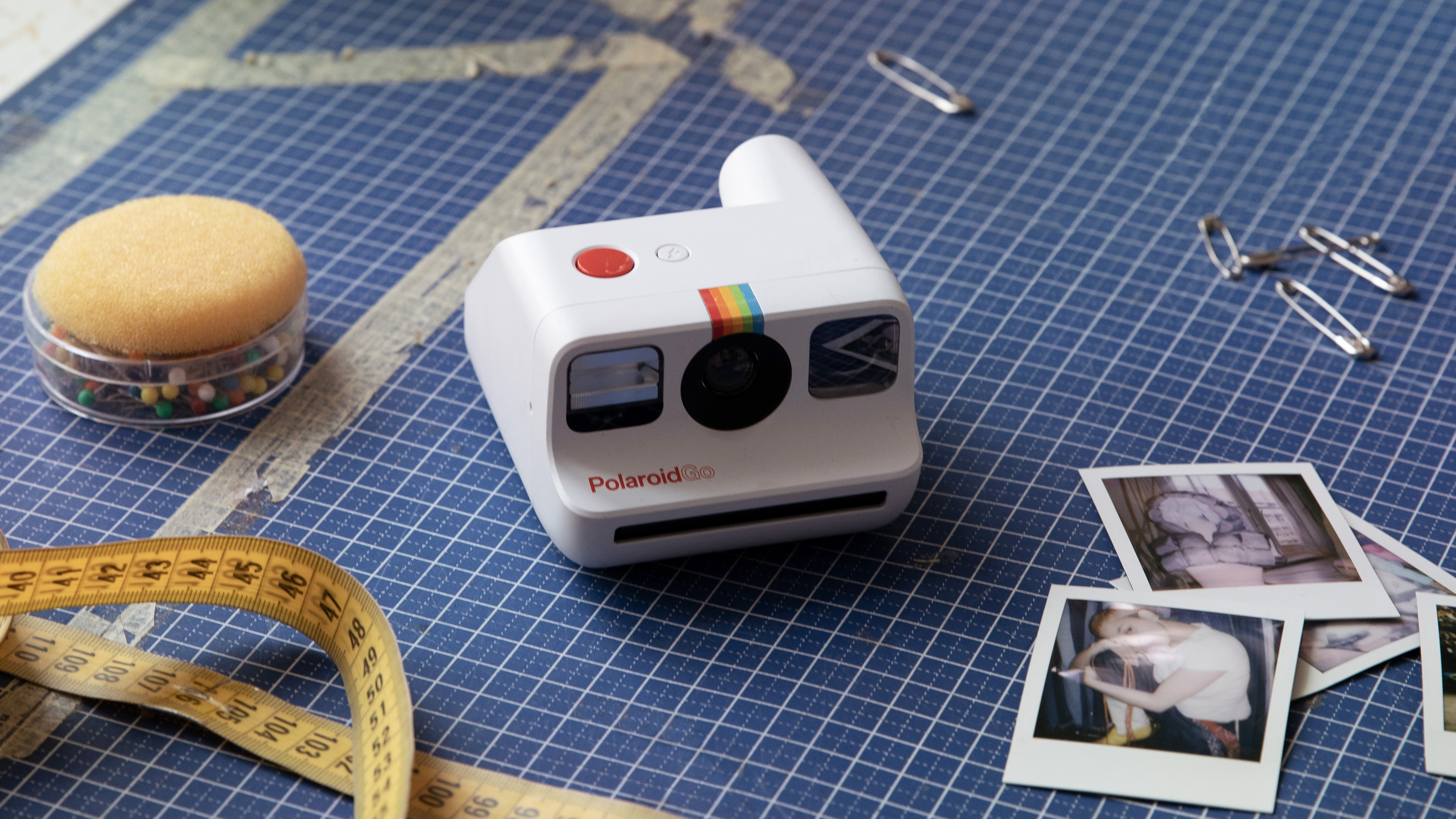Polaroid Go is the world’s smallest analogue instant camera

Polaroid has taken on Instax Mini cameras by launching what it claims is the world's smallest analogue instant camera, the Polaroid Go.
The new compact model, which is smaller than the new Fujifilm Instax Mini 40, measures just 105mm x 84mm x 61mm, making it the diddiest analogue camera in the company's storied history.
Designed as a wearable companion for those looking to print physical photos on-the-go, the Polaroid Go is also being launched with a new miniature film format that's remarkably similar in size to Instax Mini film.
- These are the best instant cameras of 2021
- Or check out our in-depth Polaroid Now review
- Discover the best film cameras in the world

While Instax Mini prints measure 86mm x 54mm, the new Polaroid Go film is effectively a square equivalent of its rival, at 66.6mm x 53.9mm (with an image size of 47mm x 46mm). In other words, expect credit card-sized prints.
While there are smaller instant cameras than the Polaroid Go, such as the Canon Zoemini S, these use a digital sensor and effectively print Zero Ink (Zink) photos, rather than the analogue, light-exposed snaps produced in seconds by Polaroid cameras. In this sense, the new Go is a true instant camera, only with a new small form factor.
In terms of specs, the Polaroid Go has a similar 100mm focal length to the Polaroid Now, which isn't unlike a 35mm full-frame equivalent, while its battery life promises to last for around 15 packs of film.
It also includes a selfie mirror, self-timer, flash and a double exposure option for creative snaps, though it's not yet clear whether the Go has autofocus or an adjustable lens for close-ups. We're just confirming this with Polaroid and will update this story when we hear back.
Sign up for breaking news, reviews, opinion, top tech deals, and more.

Good to Go
On paper, the Polaroid Go looks like a potential hit, given the increasing popularity of the best instant cameras. While it isn't packed with features, Polaroid will be hoping it offers a popular alternative to the chunkier Polaroid Now.
The camera also caps an impressive comeback from Polaroid in recent years. Following its peak in the late 1970s, the company's instant film had to be rescued by The Impossible Project in the late 2000s. That project relaunched at Polaroid Originals, and is now known simply as Polaroid again after the new company acquired the rights to the classic name.
But while there's no doubting the Go's charm, there are a few caveats. We found that the larger Polaroid Now did sometimes struggle with inconsistent exposures and an inaccurate viewfinder, so we're hoping these things have been improved in the Polaroid Go. We'll let you know if they have in a full review very soon.
Still, if you don't mind your camera being a little hit-and-miss, and are looking for something more compact than the Polaroid Now, it could be a fun new analogue photography companion.
You can pre-order the Polaroid Go now for $99.99 / £109.99 (around AU$198) from the brand's website, which makes it cheaper than the Polaroid Now ($144.99 / £160 (around AU$185). A double pack of the new Polaroid Go miniature film (giving you 16 prints) will also cost $19.99 / £18.99 (around AU$34).
- These are the best instant cameras in the world right now

Axel is TechRadar's Phones Editor, reporting on everything from the latest Apple developments to newest AI breakthroughs as part of the site's Mobile Computing vertical. Having previously written for publications including Esquire and FourFourTwo, Axel is well-versed in the applications of technology beyond the desktop, and his coverage extends from general reporting and analysis to in-depth interviews and opinion.
Axel studied for a degree in English Literature at the University of Warwick before joining TechRadar in 2020, where he earned an NCTJ qualification as part of the company’s inaugural digital training scheme.